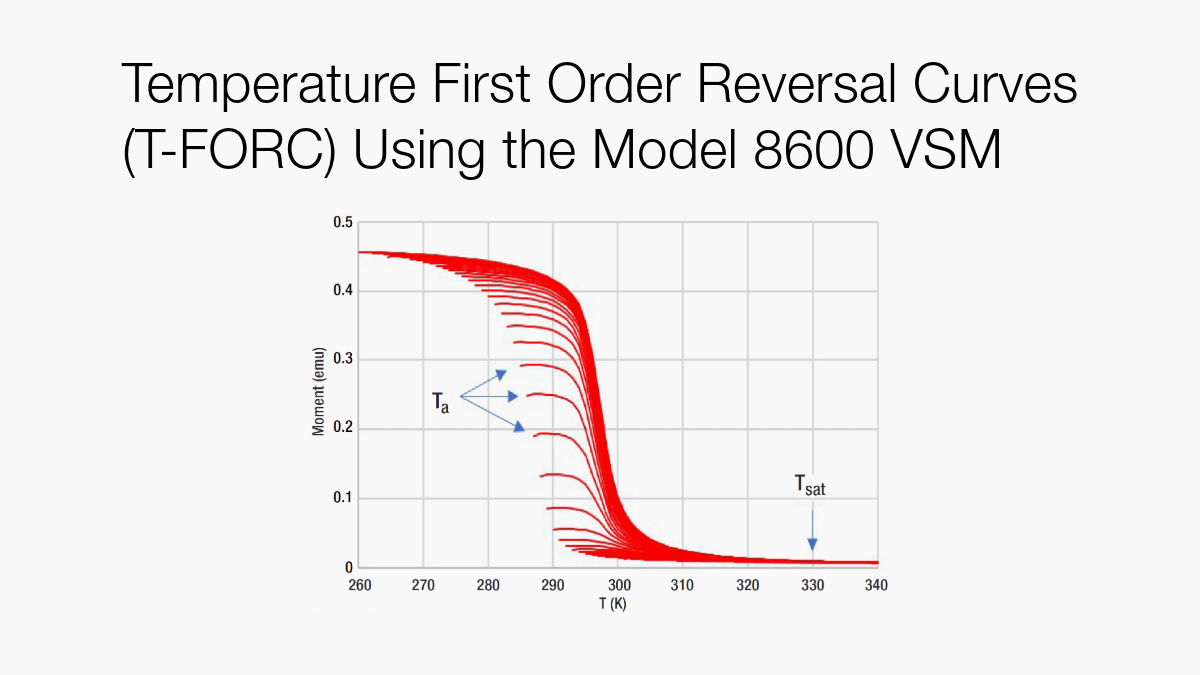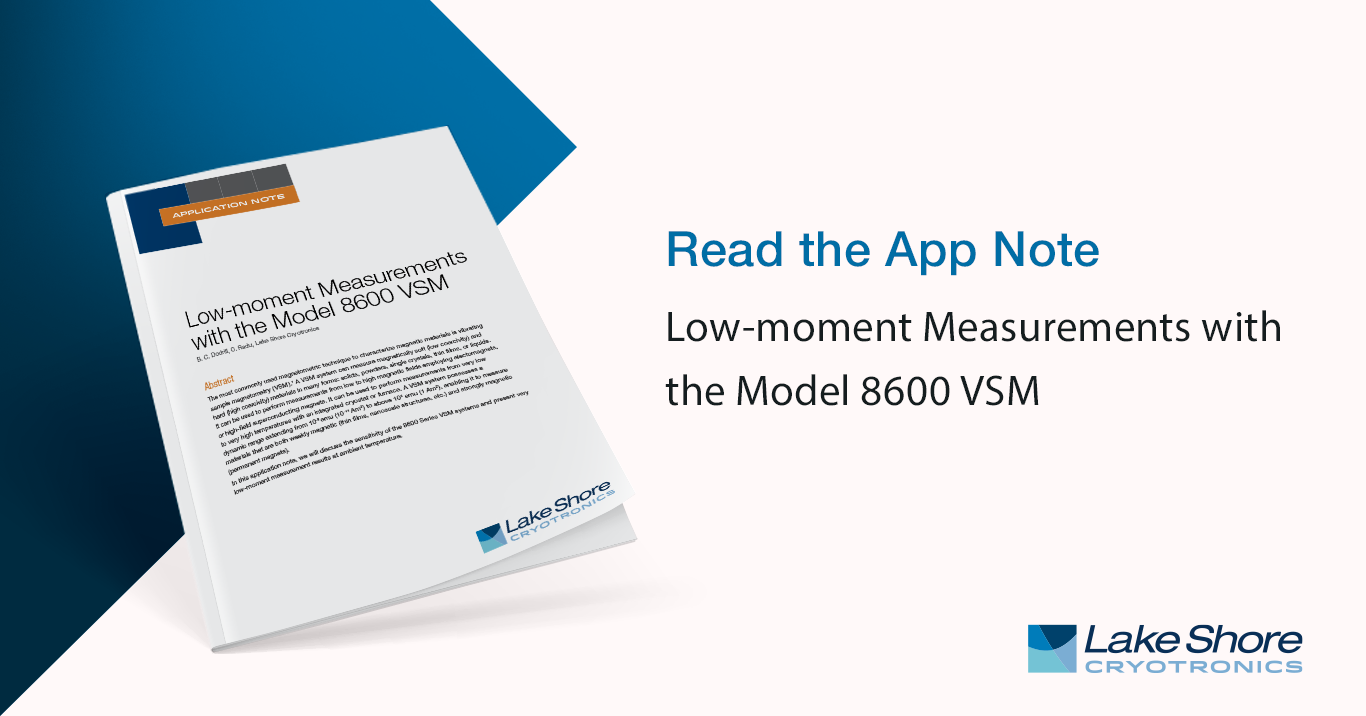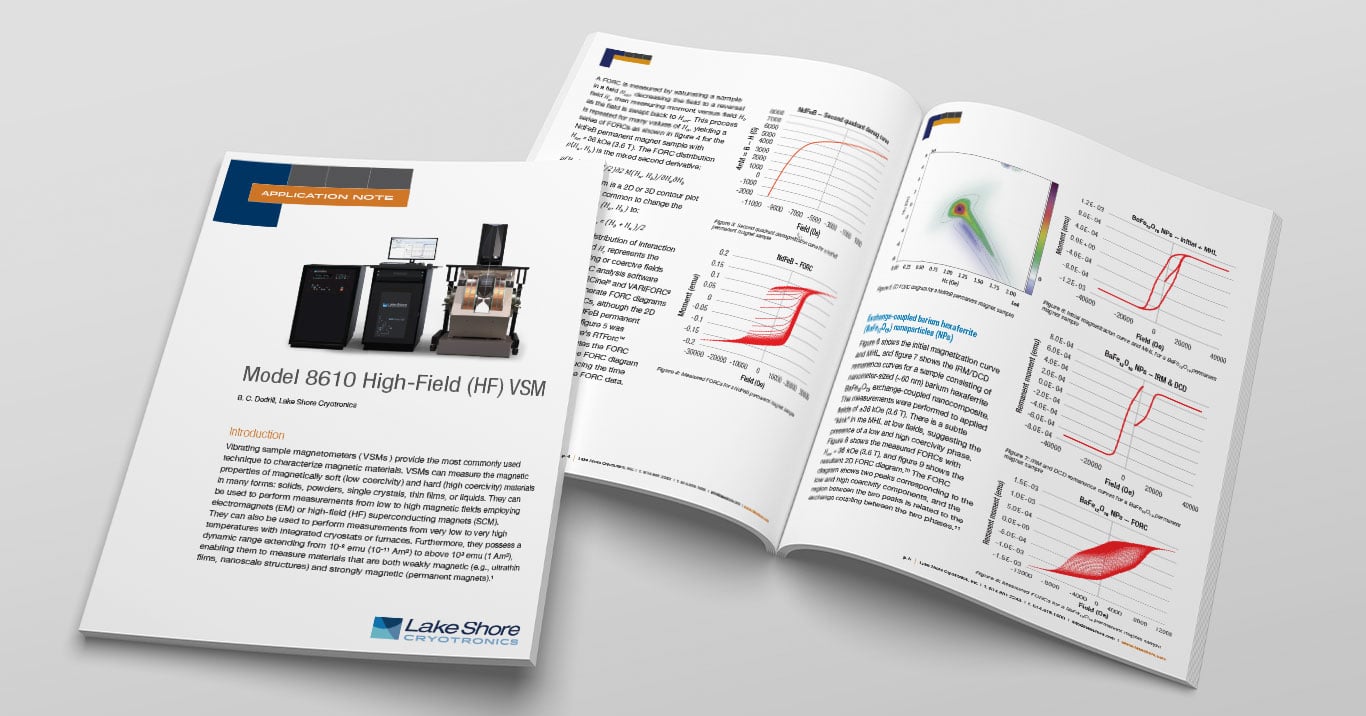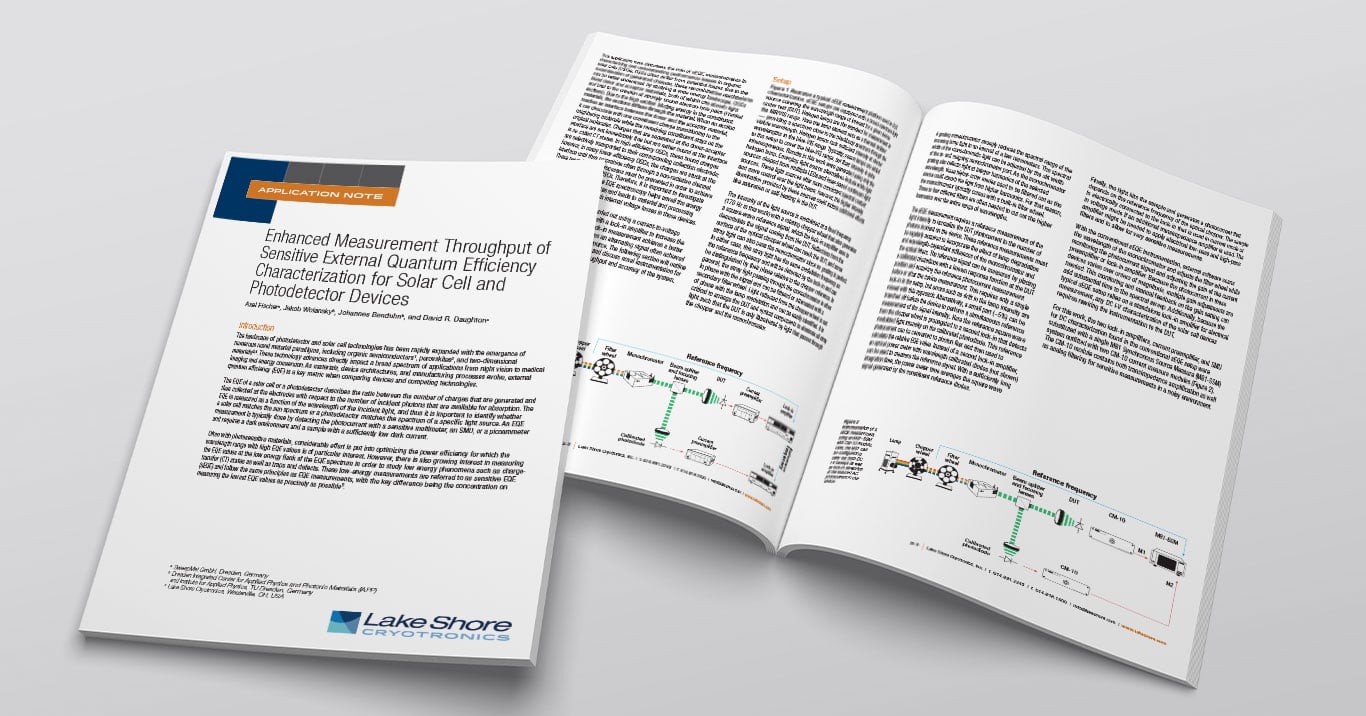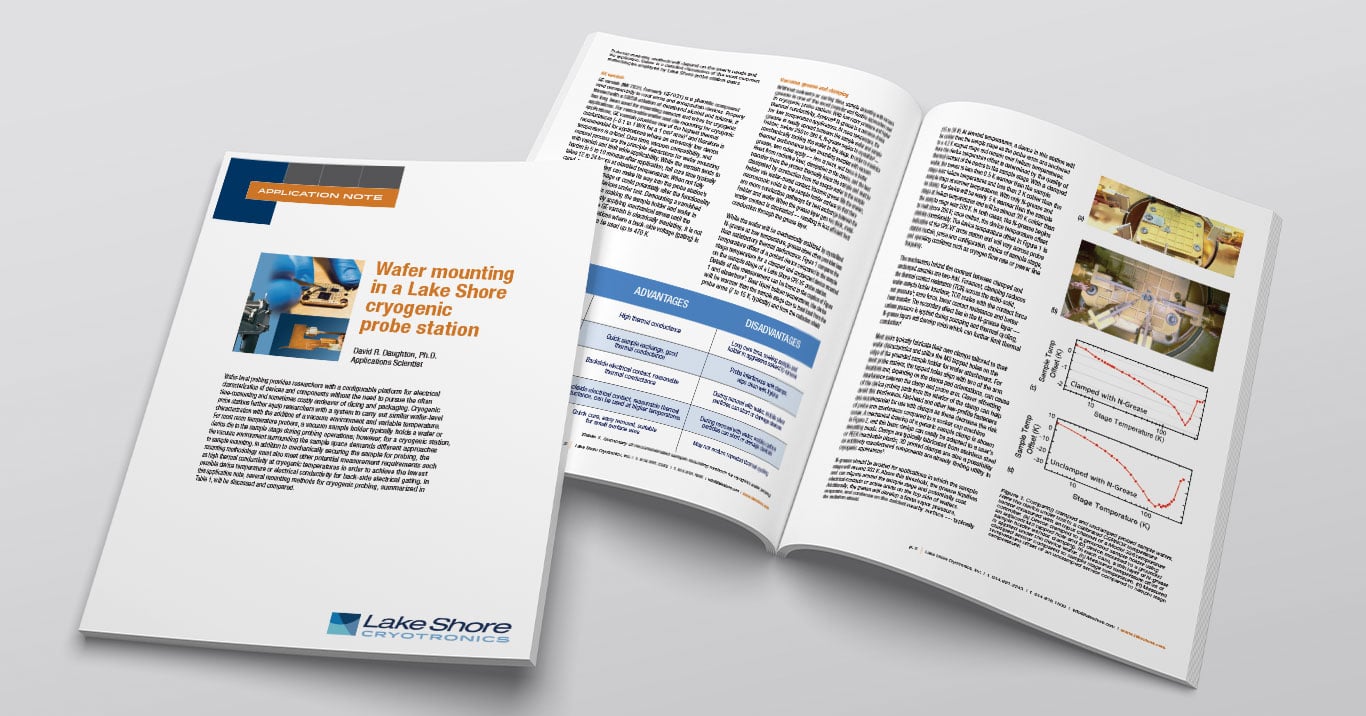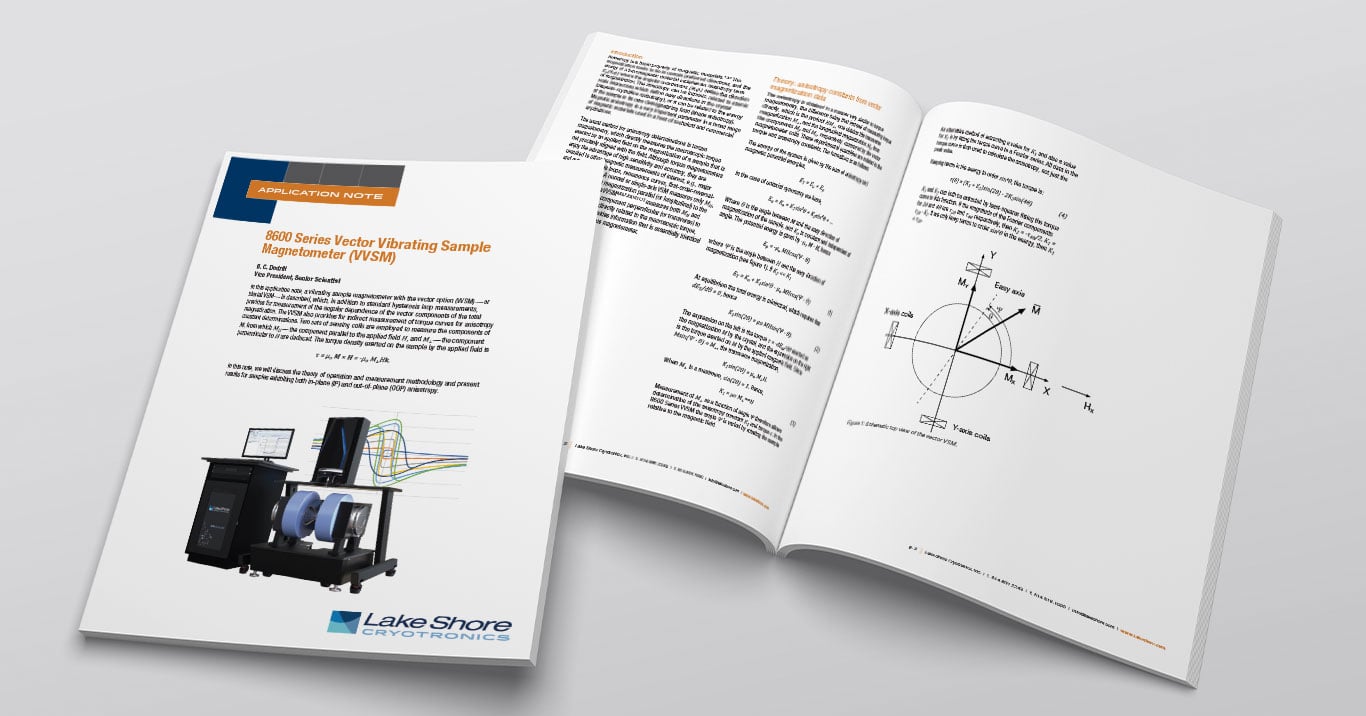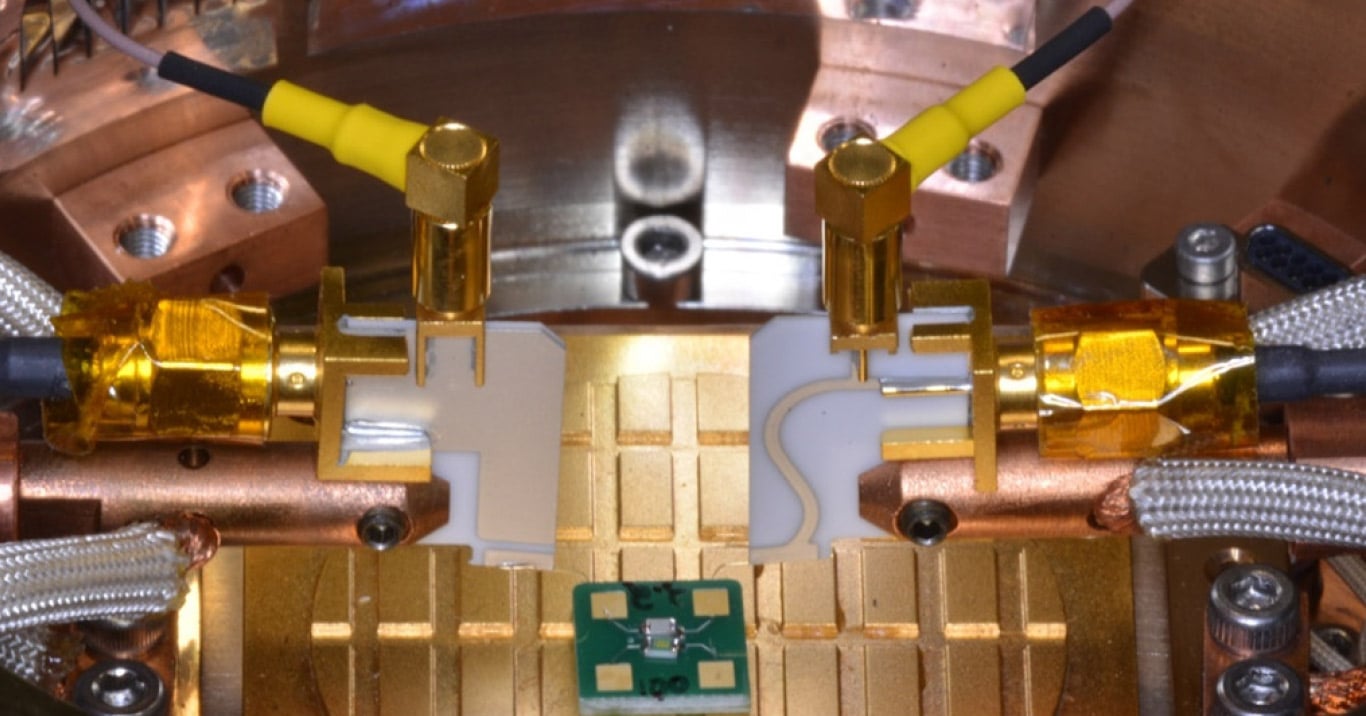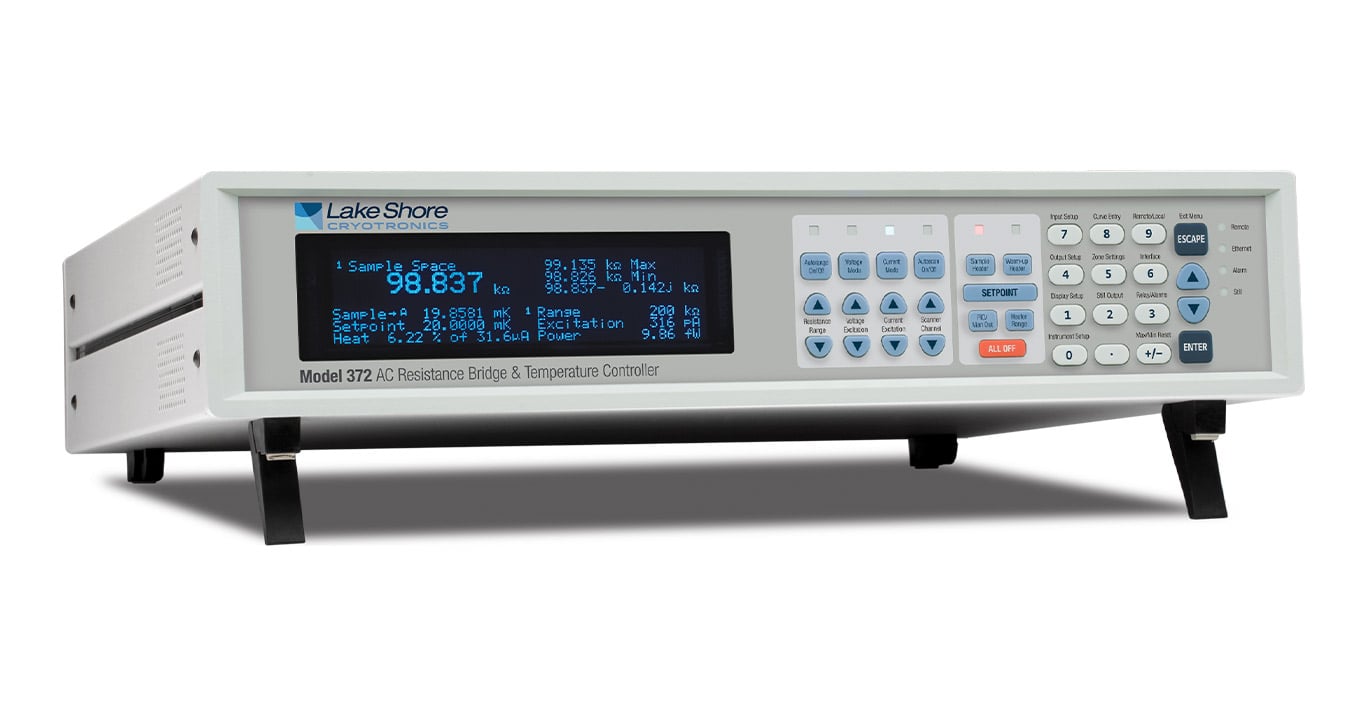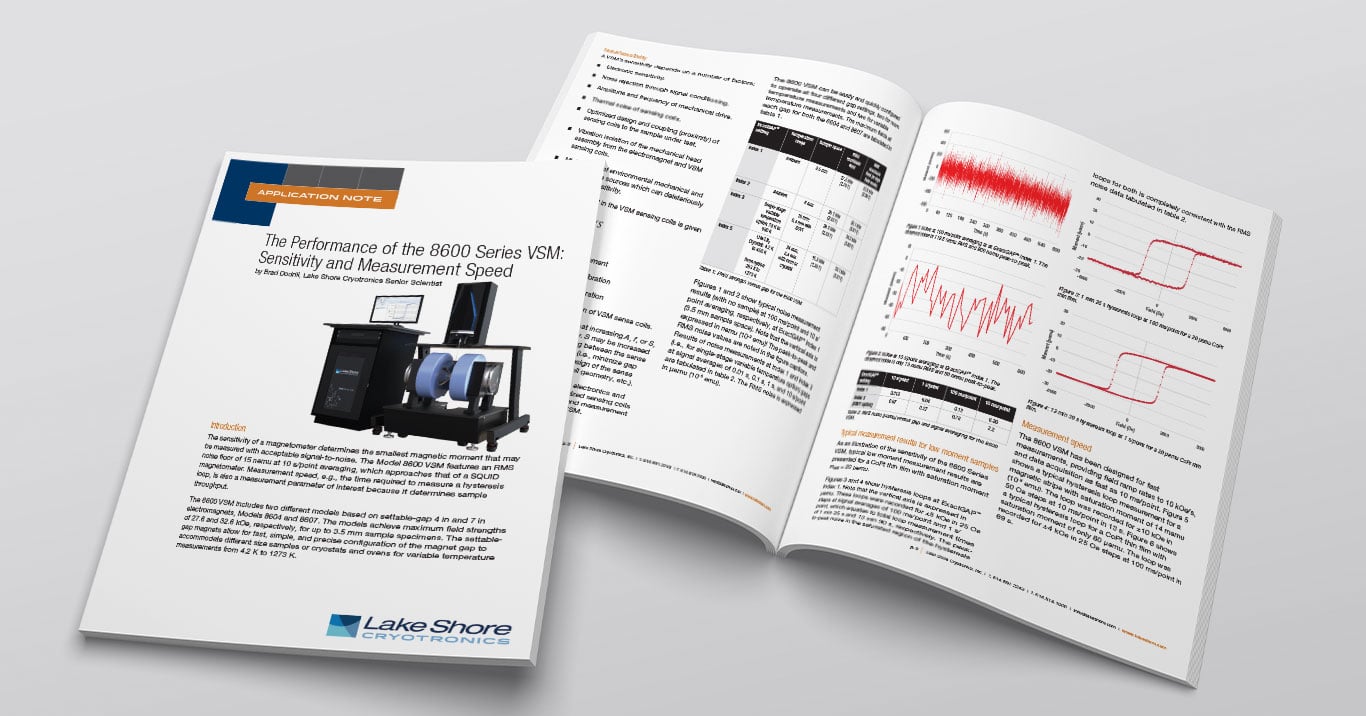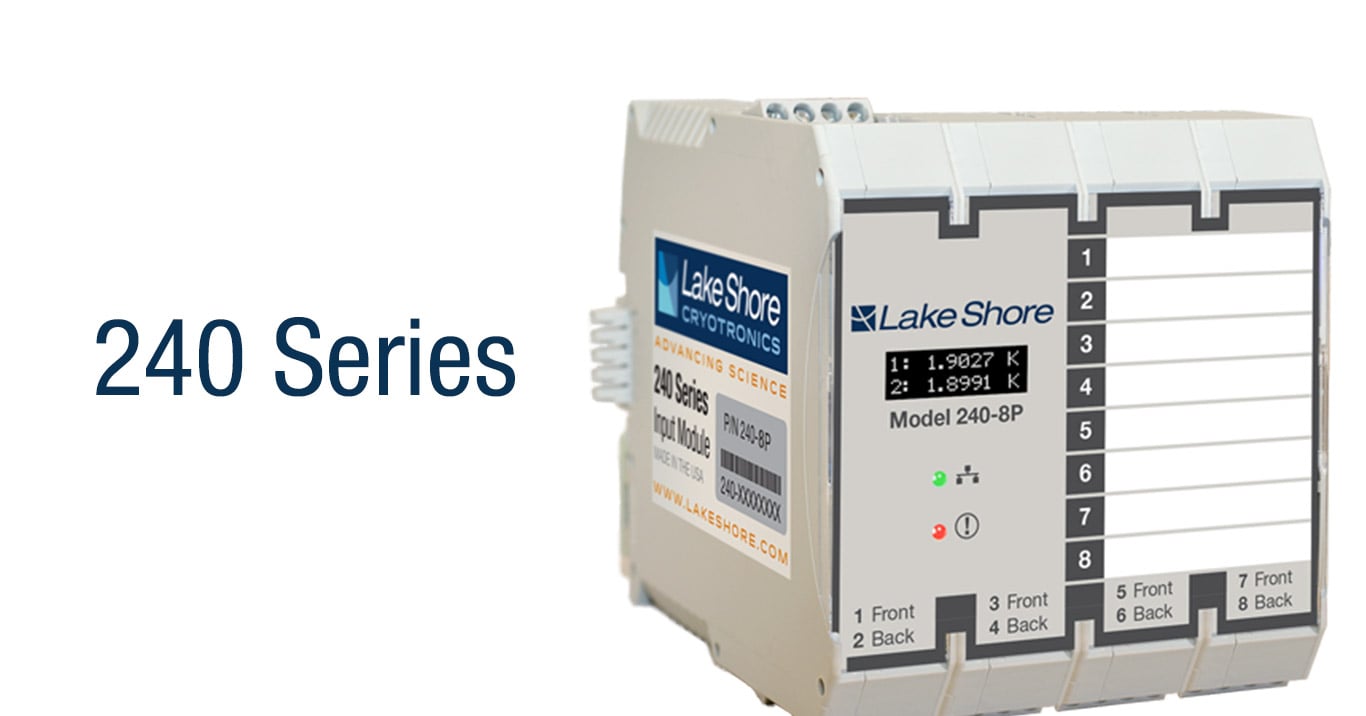First order reversal curve (FORC) measurements provide information regarding magnetic interactions and coercivity distributions that cannot be obtained from hysteresis loop measurements alone. [...]
Some magnetic materials, such as nanowires, nanoparticles, and thin films, typically possess weak magnetic moments. This is due mainly to the small amount of magnetic material present. Therefore, [...]
For researchers requiring higher applied magnetic fields than our 4- and 7-inch 8600 Series VSMs, we now offer a 10-inch electromagnet version (Model 8610). Providing fields as high as 3.6 T (>36 [...]
The landscape of photodetector and solar cell technologies has been rapidly expanded with the emergence of numerous novel material paradigms, including organic semiconductors, perovskites, and [...]
When using a cryogenic probe station, wafer mounting methodologies are a key element of wafer-level characterization. The mounting materials and approach will influence device temperature, sample [...]
If you’re interested in using a vibrating sample magnetometer to measure the vector components of magnetization and torque curves for magnetically anisotropic materials, then be sure to read our [...]
Capacitance-voltage (C-V) measurements are widely used by device and material researchers to characterize fundamental properties of new devices—typically under ambient conditions. A new app note [...]
The Model 372 AC resistance bridge and temperature controller makes it easy to perform multiple tasks that were once very difficult to perform reliably at very low temperatures. Yet the instrument [...]
In large-scale high-energy physics applications, cryogenic monitoring electronics have traditionally been placed close to the temperature sensors, mainly because of the very small signals used to [...]

